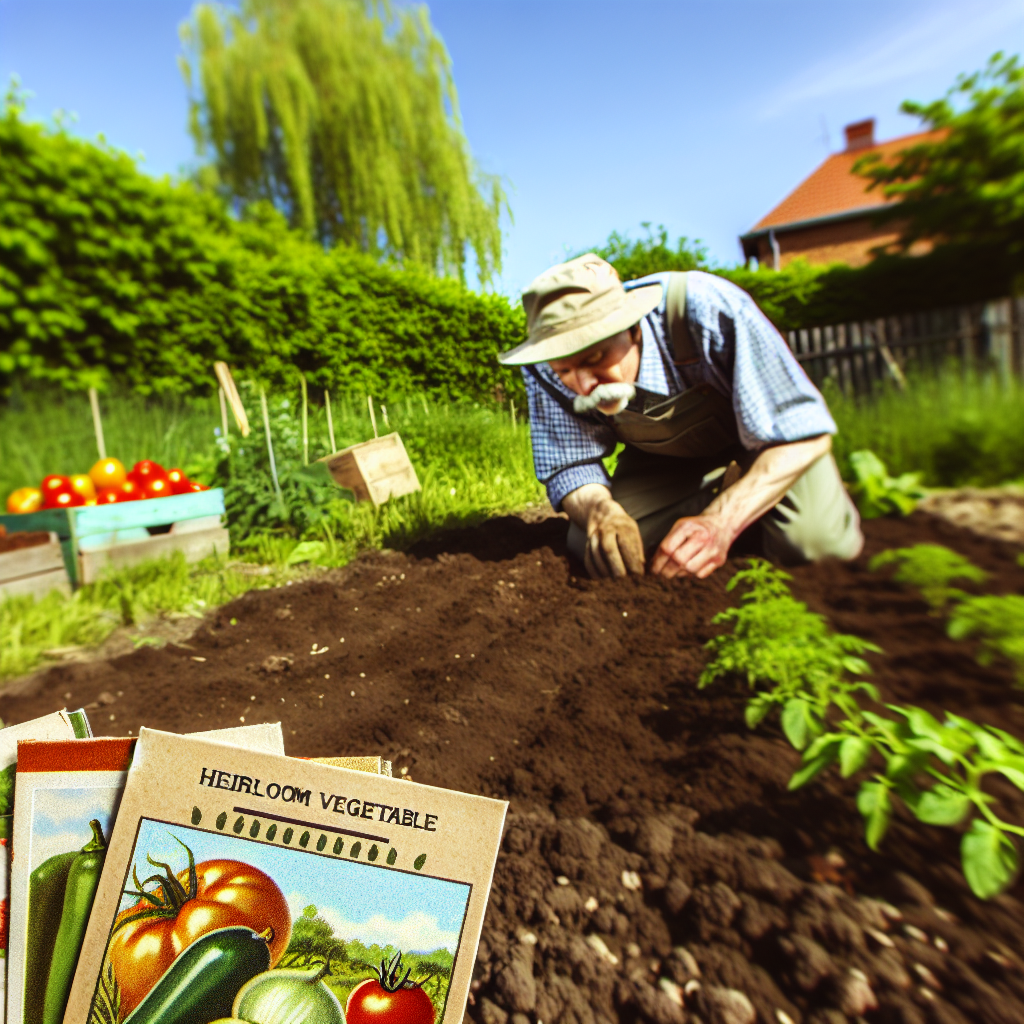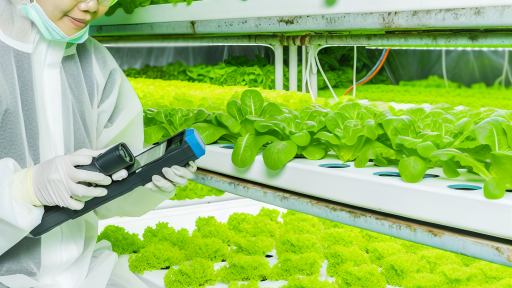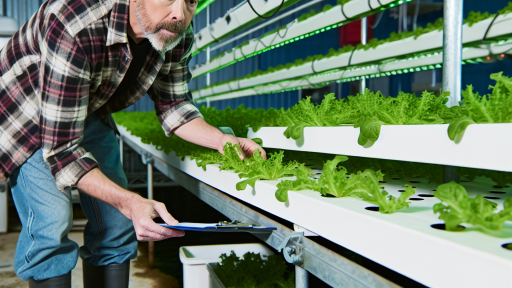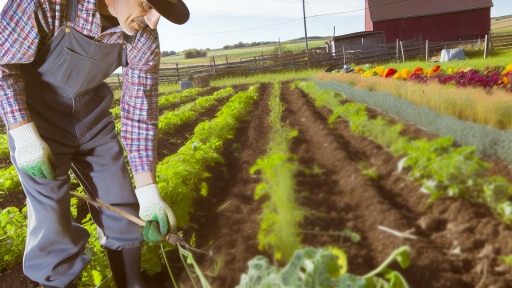Introduction to Heirloom Vegetables
Definition of Heirloom Vegetables
Heirloom vegetables are plant varieties that have been passed down through generations.
They are often cherished for their unique flavors and historical significance.
These vegetables are typically open-pollinated, ensuring seed continuity.
Benefits of Growing Heirloom Vegetables
Growing heirloom vegetables offers numerous advantages for gardeners.
They provide a wide variety of flavors, colors, and textures.
Additionally, heirloom varieties tend to be more nutritious than modern hybrids.
These vegetables often resist disease better than their hybrid counterparts.
Growing heirloom plants helps preserve biodiversity in our food system.
Furthermore, many heirloom varieties are organic and environmentally friendly.
Choosing the Right Location
Sunlight
Select a garden spot that receives ample sunlight.
Most heirloom vegetables thrive in full sun exposure.
Ensure your plants get at least six to eight hours of sunlight daily.
Observe the area during different times of the day.
This helps you identify shaded spots and sunny areas.
Soil Quality
Assess the soil quality before planting.
Transform Your Agribusiness
Unlock your farm's potential with expert advice tailored to your needs. Get actionable steps that drive real results.
Get StartedHeirloom vegetables prefer rich, loamy soil.
Avoid soils that are heavy clay or sandy.
Conduct a soil test to determine pH levels.
Most vegetables thrive in slightly acidic to neutral soil.
Add organic matter to improve soil fertility.
Compost and well-rotted manure work well for enhancement.
Drainage
Check for proper drainage in your chosen location.
Vegetables do not thrive in standing water.
Look for areas where water drains quickly after rain.
If drainage is poor, consider raised beds or mounds.
This decision can promote healthier root systems.
You can also dig drainage trenches to direct water away.
Selecting Your Heirloom Seeds
Popular Heirloom Varieties
Heirloom seeds come in various popular varieties.
Cherokee Purple tomatoes boast rich flavor.
Blue Lake green beans are prized for their tenderness.
Consider growing Detroit Dark Red beets for vibrant color.
Look for Sweet Banana peppers known for their sweetness.
Each variety offers unique tastes and textures.
Choosing diverse types enhances your garden experience.
Where to Purchase Heirloom Seeds
Finding heirloom seeds is easier than ever.
Many local garden centers stock these varieties.
Online retailers also provide a wide selection.
Consider trusted sources like Seed Savers Exchange.
Another good option is Baker Creek Heirloom Seeds.
Showcase Your Farming Business
Publish your professional farming services profile on our blog for a one-time fee of $200 and reach a dedicated audience of farmers and agribusiness owners.
Publish Your ProfileThese companies prioritize organic and non-GMO options.
Read reviews before making a purchase to ensure quality.
Considerations When Buying Seeds
Pay attention to seed quality before buying.
Check the packaging date to ensure freshness.
Examine the seed variety for disease resistance.
Consider climate adaptability for your region.
Choose seeds that suit your gardening goals.
Finally, remember to look for bulk discounts if needed.
Learn More: Sustainable Practices in Aquaponics Farming
Preparing the Soil: Testing, Amending, and Tilling
Understanding Soil Health
Healthy soil is vital for growing heirloom vegetables.
It provides essential nutrients to plants.
Begin by identifying the current condition of your soil.
Testing Soil Quality
Testing your soil should be the first step.
SoiI tests reveal nutrient levels and pH balance.
You can obtain a soil testing kit online or from local garden centers.
Follow the instructions carefully for accurate results.
Send samples to a laboratory for comprehensive analysis, if needed.
Interpreting Soil Test Results
Once you receive results, review them thoroughly.
Look for nutrient deficiencies indicated by the report.
Understanding pH levels is equally important.
Most vegetables thrive in slightly acidic to neutral pH (6.0 to 7.0).
Amending the Soil
After testing, amending your soil improves its quality.
Add organic matter like compost to enhance soil structure.
Incorporate well-rotted manure for additional nutrients.
Use lime to raise pH and sulfur to lower it, as necessary.
Tilling Techniques
Tilling the soil helps mix amendments well.
This process aerates the soil and promotes drainage.
Use a shovel or rototiller for effective results.
Be careful not to disturb beneficial organisms in the soil.
Consider minimal tillage to preserve soil health.
Final Preparations
Finalize your soil preparation before planting.
Level the soil surface to ensure even moisture distribution.
Create raised beds if drainage is a concern.
Water the soil lightly to initiate the amendment process.
Your heirloom vegetable garden will thrive with well-prepared soil.
Explore Further: The Power of Container Farming: A Guide to High-Yield Gardens
Planting Techniques
Seed Depth
Understanding seed depth is crucial for successful germination.
Generally, seeds need to be planted at a specific depth.
This depth varies based on the size of the seed.
As a rule of thumb, plant seeds two to three times their diameter deep.
Showcase Your Farming Business
Publish your professional farming services profile on our blog for a one-time fee of $200 and reach a dedicated audience of farmers and agribusiness owners.
Publish Your ProfileFor instance, larger seeds can be planted deeper than smaller ones.
Always refer to seed packets for optimal planting depth guidelines.
In addition, ensure soil is loose and well-aerated.
This helps seedlings break through the surface with ease.
Spacing
Proper spacing is essential for plant growth and health.
Crowded plants compete for nutrients, water, and sunlight.
Each vegetable type has its own spacing requirements.
For example, tomatoes require more space than radishes.
Consult seed packets for specific recommendations on spacing.
Furthermore, consider mature plant size, not just seedling size.
Additionally, maintaining adequate air circulation reduces disease risks.
Companion Planting
Companion planting enhances garden productivity and health.
This technique pairs plants that benefit each other.
Certain combinations deter pests and diseases effectively.
For example, basil grows well alongside tomatoes.
This pair can enhance flavor while repelling harmful insects.
Moreover, legumes, like beans, enrich soil with nitrogen.
In contrast, avoid planting incompatible species together.
Such combinations may stunt growth or attract pests.
Therefore, research companion planting pairings before sowing.
Uncover the Details: Micro-Farming in Urban Spaces: Turning Tiny Plots into Productive Farms
Watering Guidelines: Establishing a Routine for Healthy Growth
Understanding Plant Water Requirements
Heirloom vegetables require consistent moisture for optimal growth.
Different plants have varying water needs based on their types.
For instance, tomatoes thrive with deep, infrequent watering.
In contrast, leafy greens prefer more frequent watering.
Assess the specific needs of each heirloom variety.
Creating a Watering Schedule
A watering schedule helps maintain consistent moisture levels.
Start by watering your garden early in the morning.
This timing minimizes evaporation and fungal diseases.
Monitor weather conditions closely to adjust your schedule.
During hot spells, increase watering frequency as needed.
Techniques for Effective Watering
Use a soaker hose or drip irrigation for efficiency.
These methods deliver water directly to the root zone.
Avoid overhead watering to reduce disease risk.
Check soil moisture regularly using a finger test.
If the soil feels dry an inch below the surface, water the plants.
Watering Strategies for Different Conditions
Adapt your watering strategy for varying seasons.
In spring, adjust for newly planted seeds that need moisture.
In summer, mature plants may need more water due to heat.
During fall, reduce watering as temperatures drop.
Showcase Your Farming Business
Publish your professional farming services profile on our blog for a one-time fee of $200 and reach a dedicated audience of farmers and agribusiness owners.
Publish Your ProfileConsider mulching to retain soil moisture longer.
Signs of Over or Under Watering
Be aware of signs that indicate watering issues.
Leaf wilting can signify both over and under watering.
Yellowing leaves often indicate overwatering; check drainage.
Alternatively, very dry soil may point to underwatering.
Adjust your watering practices based on these observations.
Explore Further: Urban Homesteading: Growing Your Own Food in Limited Spaces

Pest Management: Organic Methods and Companion Planting Strategies
Introduction to Organic Pest Management
Organic pest management supports a healthy and sustainable garden environment.
This method minimizes the use of synthetic chemicals.
Instead, it emphasizes natural solutions to control pests.
Understanding Common Garden Pests
Identifying common pests is the first step in pest management.
Common pests can include aphids, slugs, and beetles.
Recognize early signs of infestations to take swift action.
Natural Pest Control Methods
Many effective methods exist for organic pest control.
Encourage beneficial insects, such as ladybugs and lacewings.
These insects prey on harmful pests, keeping your garden balanced.
Additionally, implement barriers like row covers to protect your plants.
Utilizing Companion Planting
Companion planting enhances biodiversity and can deter pests naturally.
Certain plants repel unwanted insects while attracting helpful ones.
For example, marigolds can deter nematodes and aphids.
Plant basil alongside tomatoes to enhance growth and flavor.
Effective Companion Plant Combinations
- Tomatoes and basil
- Carrots and onions
- Cucumbers and radishes
- Broccoli and nasturtiums
The Role of Neem Oil
Neem oil serves as a powerful natural pesticide.
This oil disrupts the life cycle of many pests.
Moreover, it is safe for beneficial insects when applied correctly.
Monitoring and Maintaining an Organic Garden
Regular monitoring helps identify pest problems early.
Inspect plants weekly for any signs of damage or pests.
Maintain healthy soil to promote robust plant growth.
Healthy plants are better equipped to resist pests naturally.
Enhancing Your Heirloom Vegetable Garden
Implementing these organic pest management strategies enhances your heirloom vegetable garden.
By combining natural methods with companion planting, you create a thriving ecosystem.
Ultimately, enjoying a bountiful harvest while protecting the environment is possible.
Harvesting and Saving Seeds: Best Practices for Future Planting
Timing Your Harvest
Harvest vegetables at their peak ripeness for optimal seed quality.
Pay attention to color, size, and firmness as indicators of readiness.
It is essential to monitor the growing conditions regularly.
Collecting Seeds
Use clean, sharp tools to minimize damage during seed collection.
Gather seeds from healthy plants to ensure good genetic quality.
Once collected, leave seeds to dry completely in a cool, dry place.
Cleaning and Storing Seeds
Remove any plant material from the seeds during cleaning.
Label each seed packet with the plant name and harvest date.
Store seeds in airtight containers to ensure longevity.
Showcase Your Farming Business
Publish your professional farming services profile on our blog for a one-time fee of $200 and reach a dedicated audience of farmers and agribusiness owners.
Publish Your ProfilePlace containers in a dark, cool location to preserve seed viability.
Testing Seed Viability
Perform a simple germination test to check seed viability.
Place several seeds in a damp paper towel and seal in a bag.
Keep the bag in a warm area and check for sprouting in a week.
Documenting Your Seed Collection
Maintain a journal to track which seeds you collect and store.
Note any unique characteristics of each variety for future reference.
This helps improve garden planning and crop rotation strategies.
Obtaining Heirloom Seeds
Seek out local seed swaps or heirloom seed companies for diversity.
Participate in community gardening events to exchange seeds.
Maintain a diverse gene pool by adding new heirloom varieties annually.
Enjoying the Fruits of Your Labor and Sharing Your Heirlooms
Reaping the Rewards
After months of hard work, it’s finally time to enjoy your garden’s bounty.
Harvesting heirloom vegetables brings great satisfaction.
Each variety has its unique flavor and characteristics.
Relish the fruits of your labor and savor their freshness.
Cooking with Heirlooms
Heirloom vegetables shine in various culinary creations.
Experiment with salads, soups, and roasted dishes.
Use fresh herbs to enhance the vegetables’ natural flavors.
Share your favorite recipes with friends and family.
Sharing the Harvest
Think about sharing your harvest with others.
Consider donating surplus produce to local food banks.
You can also host a vegetable swap with neighbors.
Sharing creates a sense of community and goodwill.
Preserving the Goodness
Find joy in preserving your heirloom vegetables.
Canning, freezing, or dehydrating extends their shelf life.
Preserved heirlooms can brighten your winter meals.
Try pickling cucumbers or making tomato sauce.
Creating a Legacy
Saving seeds is crucial for maintaining heirloom varieties.
Learn proper seed-saving techniques for next season.
Share heirloom seeds with fellow gardeners.
This practice ensures their availability for future generations.
Additional Resources
Starting Seeds for the Flower Farm — Heirloom Soul Florals
Native American Gardening: The Three Sisters and More – Grit




